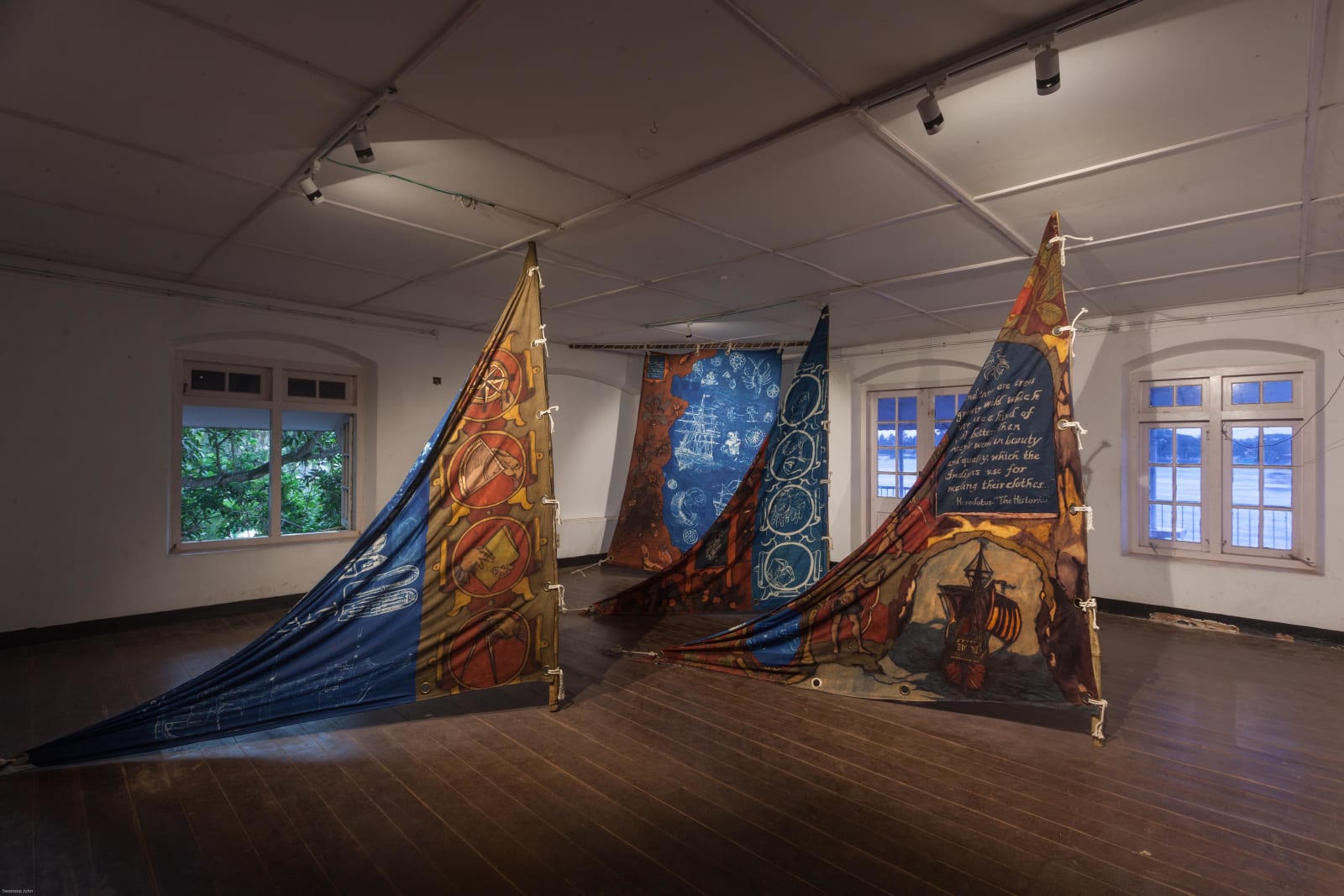Lavanya Mani Indian, b. 1977
144 x 108 in each I 365.76 x 274.32 cm each
2014, Natural dyes, cynotype and applique on cotton fabric
This work is an applique of two ancient techniques, Kalamkari and Cyanotype. Cyanotype is one of the
earliest photographic techniques – a camera less technique that allows one to contact print an image
or object under ultra violet light. The blueprint process is characterized by white lines on a blue
background, a negative of the original – usually a technical, engineering or architectural drawing. The
blue of the cyanotype chemistry mimics the blue from the indigo dye especially when done on fabric,
allowing me to reproduce historical documents like an engineering drawing of a slave ship directly on
fabric. The stitching together of these two techniques enabled me to address the complex role of
colonialism and multi layered histories of, dyes, spice, chintz, textile and slave trade, between the East
and the Western world that laid the foundations or blueprints of Modernism.
